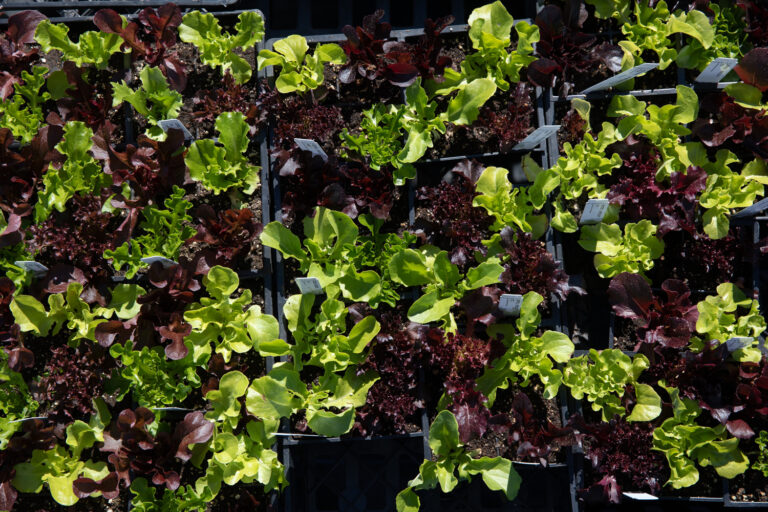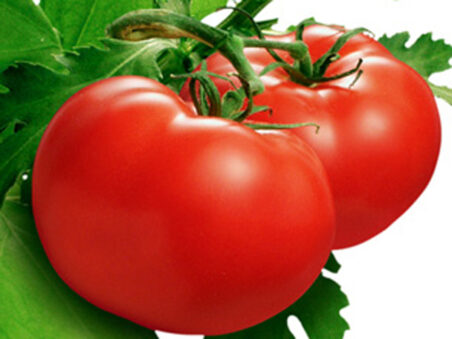Late May Vegetable Planting Tips

What to Plant When – Or is it too late?
Our common heavy snows in March, cold Aprils and suddenly mild Mays, make spring vegetable gardening a challenge of hurry up, wait and start again in the Berkshires.
Don’t panic and don’t rush it. If your tomatoes were ‘blah’ last year, try new varieties or plant other vegetables that grow better in your garden’s location. All good gardeners have failures – that’s how they learn. A bad year for tomatoes can be a spectacular year for broccoli, beets and greens. A short-season tomato may not do as well as a long-season variety or vice versa so maybe plant both to hedge your bet.
Below you will see easy-to-grow vegetables and herbs that you can start in the garden as soon as soil can be worked along with tips on where, how much and other cultural requirements.
Wait! What do we mean by ‘soil can be worked?’
To test if soil can be worked, scoop up some typical garden soil. You can “work it” when the soil crumbles loosely and doesn’t form mucky mud ball. The soil will stick together somewhat but not as an impenetrable clod. You won’t be able to squeeze water out of it but it will hold together.
Cool Weather Crops:
Gardeners call the following “cool weather crops”. We list some of the most popular to grow and ones that are truly extraordinary when fresh-picked, making them worth the trouble. There are more. If your family loves a vegetable not listed, please contact us for tips on growing it for yourself. And no, it’s not too late. Seeds of these herbs and vegetables can be planted directly into the garden and in succession every 2 weeks through the time indicated.
- Arugula – through August
Spicy green that adds zip to salads and stir-fry. Try using it in place of basil in your pesto recipe – outstanding! Arugula holds up in light frost and often can be picked right up to Thanksgiving! - Beets – seed through August, transplants April through June
Young green tops add great tartness to salads. Fresh beets roasted or blanched to al dente texture taste nothing like those canned pickled beets found in salad bars. - Carrots – through August
Carrots are sweet and delicious from the garden but take a long time to germinate. Start early and keep seeding. Mix seed with radish or baby lettuce greens to mark the growing area. Lettuce leaves and radish can be harvested around the carrot seedlings before the carrot roots develop to a harvestable size. Keep harvested carrots for months by layering in wooden boxes of damp sand. - Lettuces – through August or transplants from April through August
Scatter a mesclun mix in a small area then cut outer leaves from every few plants as they grow. Occasional pulling of a large lettuce clump will ‘thin’ the area and allow other lettuce clumps to grow larger. Warm weather will cause the lettuce to bolt and once flower stems emerge, the greens get bitter. Pull the whole plant if you see the center core beginning to elongate.- Pest alert- To deter snails or slugs, spread diatomaceous earth (crushed volcanic or pumice stone) or crushed eggshells (pre-rinsed) around the plants. Also, keep thinning and sow fresh rows. A board or stone in your garden path will attract slugs looking for cool damp places to escape the sun. Lift the stone or board daily, scrape off and dispose of slugs into a jar of soapy salt water.
- Peas – plant as early as possible and continue until June.
Peas will bolt in warm weather. If the summer is cool, a July through August sowing will yield peas in September and October. - Parsnip – seed in succession through May. Consider the advice for carrots.
Intermediate Crops- mid or late May:
If planting transplants, install them in the garden when the soil is warmer and once the transplants have hardened off. Transplanting too early will set back the plant and delay harvest later than if you planted seed. Wait until mid or late May to plant seeds or transplants of:
- Basil – seeds or transplants into August
- Beans – seed in succession through July
Water well once they start to flower. Pick daily to keep plants producing. Planting pole beans on at fence posts and teepees, or against a trellis will help save garden space. - Corn – seed in succession early May through June
- Cucumber- seeds or transplants into August
Along with rotating your crops, install barriers at planting to prevent insect pests.- Pest alert- To prevent cucumber beetles and vine borers, cover cucumber plants and the next four vegetables at planting time with remay or spun-polyester cloth. The cloth allows moisture and sunlight to penetrate but keeps out the beetles and borers. By the time flowers are produced, plants will be larger and can withstand pests so you can remove the cloth. Keep inspecting for signs of pests and pick off.
- Summer Squash – seeds or transplants into August.
- Melons – seeds or transplants through June
- Pumpkins– seeds or transplants through June
- Winter Squash– seeds or transplants through June.
Warm Weather Crops – early June when soil is warm:
As mentioned before, planting two or three varieties of each vegetable will help you ride out the vagaries of weather and pests. Plant these as transplants and after all danger of frost has passed. Ideal soil temperature for tomato plants is a minimum of 60oF.

- Eggplant – Late May through June
- Peppers – Late May through June
- Tomatoes – Late May through June. By waiting to plant, your tomato plants will get bigger faster. Fungal disease on tomatoes can be sudden and terribly disappointing.
- Pest alert- To prevent airborne fungal diseases, use a pre-emergent fungicide like Serenade before you see any sign of the fungus. Start spraying and follow package instructions in June. If a problem this year, put a note on your calendar to start earlier next year.
More tips for Vegetable Success
- Confirm that you haven’t planted the vegetable in the same spot for at least 3 seasons. Use a crop rotation plan.
- Add compost at the beginning of the season.
- Mulch with Salt Hay around plants to keep soils moist and weed seeds out.
- Weeds will germinate regardless and will compete with vegetables for nutrients in the garden. Visit the garden every day to pull them out by the roots and stay ahead of weeds.
- Avoid overhead watering and water with soaker hoses early in the day to prevent disease from developing on cool damp leaves.
- To keep out rabbits and woodchucks – you’ll need a heavy-duty fence. Dogs, frequent visits to the garden and predator urine can help as well.
- Plant Annual flowers and herbs like dill (with your leafy group) or fennel (with your root group) among the vegetables to encourage pollinators, to distract insect pests and to attract beneficial insects (who keep pest insects in check).
Our Summer Garden Advice
By mid-summer, perennial gardens can start to look overgrown, annual flowers begin to fade, and bugs may be munching on your vegetables.
Summer Articles